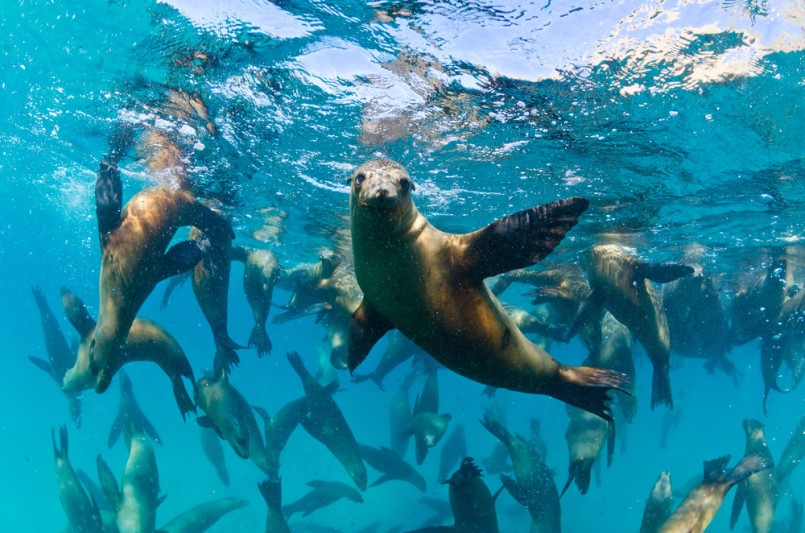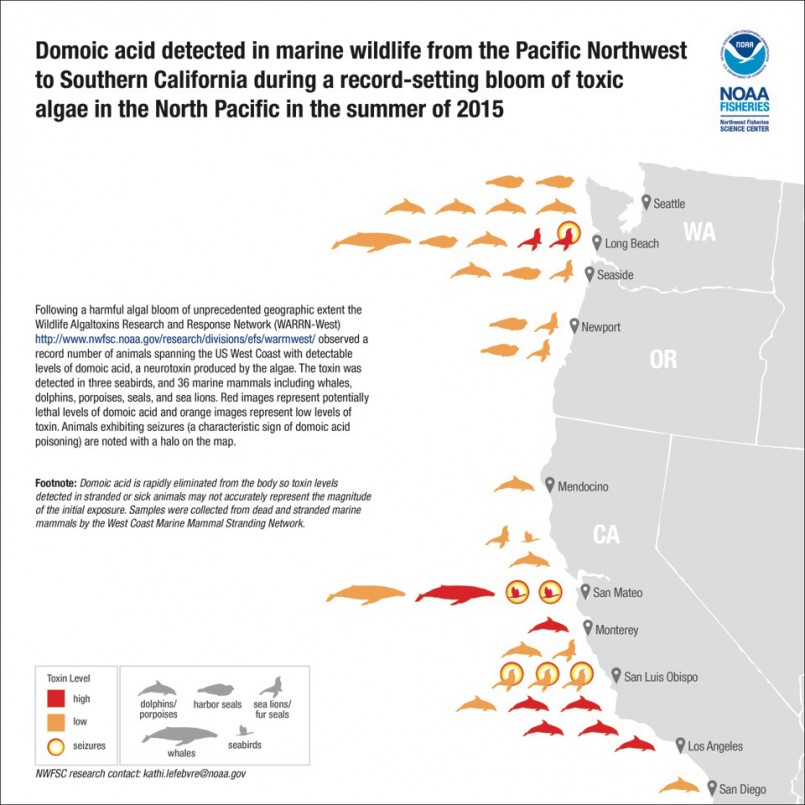Environment
Toxic Algae Is Slowly Killing Sea Lions

Image: Shutterstock/Joost van Uffelen
Toxic Algae Is Slowly Killing Sea Lions
According to environmental news source Take Part, scientists have noted an unusual amount of hungry sea lions popping up on the California coast. Originally, they attributed the sea lion food shortage to fish moving away from warmer than usual waters. Though this is a possibility, one thing is for sure, the water is getting warmer due to climate change and it’s not a good thing. Recently, scientists have linked the growing number of rescued sea lions to unprecedented growth of toxic algae.
What is Toxic Algae?
There are numerous types of algae under the sea, many of which are non-toxic. Toxic algae grows along the California coast each year, but this year not only was there an unusually high algal bloom—it reached all the way to the Oregon coast. The algal bloom produces domoic acid, a neurotoxin known to cause disorders including memory loss, seizures and even death among sea lions, shellfish, dolphins and humans.

Image: Take Part
Algal blooms are a primary food source for shellfish and other bottom feeders that sea lions consume. Domoic acid contamination can and has reached all levels of the food chain. “An outbreak of toxic encephalopathy caused by eating mussels contaminated with domoic acid, “a 1990 paper in the New England Journal of Medicine documents the case of more than 100 Canadians who became sick after eating mussels high in domoic acid. These mussels were sourced from an estuary that contained an algal bloom responsible for its production.
How Domoic Acid Affects Sea Lions
To further understand the effects of domoic acid on sea lions, a recent study examined its influence on memory. Scientists hid fish in one of four buckets in a sea lion enclosure, the same bucket each time. After three days, sea lions without exposure to domoic acid found the fish immediately. However, after as many as seven days, sea lions with exposure to domoic acid were still unable to detect the fish.
When translated to nature, a sea lion with short or long term memory loss due to domoic acid can experience severe disorientation. A sea lion suffering domoic acid-induced short term memory may forget where to find a food source or its home base. When considering mothers affected with the neurotoxin, they may leave their pups while they spend hours searching for food and may also wean their young prematurely.
Current research efforts are exploring this phenomenon at the Marine Mammal Center in California. The NOAA (National Oceanic and Atmospheric Administration) has a special research team, the Wildlife Algal Toxin Research and Response Network (WARRN), which researches this phenomenon specifically. WARRN-West, the network’s west coast branch, has begun marking sea lions with biomedical trackers to determine the long-term effects of domoic acid poisoning.
While scientists are still trying to understand the possible long-term effects of domoic acid, other groups have focused on feeding the sea lions. Are you interested in helping to save the sea lions? Currently, you can partner with Take Part by pledging a donation to feed the sea lions.





0 comments